‘Altar Of Twelve Gods’ At Gabii, Italy Was Once An Important Ancient Place
A. Sutherland - AncientPages.com - 'Altar of Twelve Gods', also called the Sanctuary of the Twelve Gods was found at Gabii, Italy.
This valuable piece of sculpture represents the twelve gods of the Roman pantheon.
Image credit: Jastrow - Public Domain
Its purpose is unknown, maybe it functioned as the brink of a well or a Zodiac altar. The altar became the zero point from which distances to Athens were calculated. It also functioned as a place of supplication and refuge in 519 BC, when the Plataeans came to Athens seeking protection from Thebes.
Herodotus mentioned an 'Altar of twelve gods', according to Herodotus-, while "the Athenians were making sacrifices to the twelve gods, they (the Plataeans) sat at the altar as suppliants and put themselves under protection."
Currently visible remains of the Altar in the Agora of Athens. Image credit: Tomisti - CC BY SA 4.0
In 431 BC, as the result of accusations of the misappropriation of public funds involving Pericles and the sculptor Phidias, some of Phidias's assistants sat as suppliants at the altar.
Shortly before his execution at Athens (in about 355 BC), the Athenian general Callistratus took refuge there as well.
The altar is adorned with bust of the twelve principal divinities of the Greeks and Romans, namely Jupiter, Minerva, Apollo, Juno, Neptune, Vulcan, Mercury, Vesta, Ceres, Diana, Mars and Venus with Cupid behind her shoulder.
They are adorned with the twelve signs of the zodiac, and with symbols of the divinity supposed to preside over the month, which each sign indicates.
Altar of the twelve gods. Original in Louvre, cast in Pushkin museum. Use unknown: maybe the brink of a well or an Zodiac altar. The object represents the twelve gods of the Roman pantheon, each identified by an attribute: Venus and Mars linked by Cupid, Jupiter and a lightning bolt, Minerva wearing a helmet, Apollo, Juno and her sceptre, Neptune and his trident, Vulcan and his sceptre, Mercury and his caduceus, Vesta, Diana and her quiver and Ceres. Marble, found in Gabii (Italy), 1st century CE. Image source - Louvre Museu. Image credit: shakko - CC BY-SA 3.0
The Altar of the twelve gods was once one of the more distinguished precincts in the Athenian Agora. Today very little meets the eye. Nearly nine-tenths lies concealed beneath the Athens-Piraeus Electric Railway.
It was excavated by G. Hamilton in 1792 at Gabii an ancient city of Latium, located 18 km (11 mi) due east of Rome, Italy. The identification of the monument was made possible by the discovery of an inscription on a marble statue base found in the area of the altar. The inscription reads: “Leagros, son of Glaukon, dedicated (the statue) to the Twelve Gods”.
Leagros was an Athenian general after 480 BC and was killed in 461 BC during an abortive campaign in Thrace.
This piece of art was purchased for the Louvre by Napoleon. On top within the ring of divine heads, there is a shallow sinking with narrow slits at the bottom used to a toothed metal plague, now lost.
Written by – A. Sutherland - AncientPages.com Senior Staff Writer
Updated on March 21. 2023
Copyright © AncientPages.com All rights reserved. This material may not be published, broadcast, rewritten or redistributed in whole or part without the express written permission of AncientPages.com
Expand for referencesReferences:
The Sanctuary of the Twelve Gods in the Athenian Agora: A revised view
C.R. Long, The Twelve Gods of Greece and Rome
More From Ancient Pages
-
 Was Tintagel Castle A Fortress Used By Iconic Hero King Arthur?
Featured Stories | Jul 12, 2022
Was Tintagel Castle A Fortress Used By Iconic Hero King Arthur?
Featured Stories | Jul 12, 2022 -
 Nilometer: Innovative Tool Measuring The Nile’s Water Levels In Pharaonic Egypt
Featured Stories | Jun 1, 2024
Nilometer: Innovative Tool Measuring The Nile’s Water Levels In Pharaonic Egypt
Featured Stories | Jun 1, 2024 -
 Has AI Found An Unknown Human Ancestor?
Archaeology | Jan 17, 2019
Has AI Found An Unknown Human Ancestor?
Archaeology | Jan 17, 2019 -
 America’s Mysterious Pedro Mountain Mummy And The Hidden Race Of Little People
Featured Stories | Jul 3, 2014
America’s Mysterious Pedro Mountain Mummy And The Hidden Race Of Little People
Featured Stories | Jul 3, 2014 -
 Long-Lost Legendary Ancient Temple Discovered On San Miguel Hill In Mexico
Archaeology | Oct 20, 2023
Long-Lost Legendary Ancient Temple Discovered On San Miguel Hill In Mexico
Archaeology | Oct 20, 2023 -
 On This Day In History: Great Fire Of Rome Recorded – On July 18, 64 AD
News | Jul 18, 2016
On This Day In History: Great Fire Of Rome Recorded – On July 18, 64 AD
News | Jul 18, 2016 -
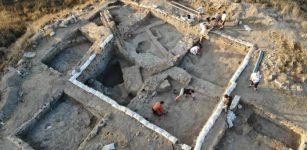 Huge Defensive Wall Excavated At Tel Erani, Israel Is More Than 5,300 Years Old
Archaeology | Sep 12, 2019
Huge Defensive Wall Excavated At Tel Erani, Israel Is More Than 5,300 Years Old
Archaeology | Sep 12, 2019 -
 Grave Of Amazon Warrior Who Lived In The Kingdom Of Urartu Discovered In Armenia
Archaeology | Nov 28, 2019
Grave Of Amazon Warrior Who Lived In The Kingdom Of Urartu Discovered In Armenia
Archaeology | Nov 28, 2019 -
 Sinuses Reveal More About The Evolution Of Ancient Humans
Archaeology | Oct 29, 2022
Sinuses Reveal More About The Evolution Of Ancient Humans
Archaeology | Oct 29, 2022 -
 Ancient Mediterranean Mystery In The Himalayas Puzzles Archaeologists – Can DNA Or Legends Solve The Riddle?
Featured Stories | Sep 24, 2024
Ancient Mediterranean Mystery In The Himalayas Puzzles Archaeologists – Can DNA Or Legends Solve The Riddle?
Featured Stories | Sep 24, 2024 -
 The First Conservationists May Have Been Early Pacific Islanders Who Started The Practice 3,000 Years Ago
Archaeology | Sep 29, 2021
The First Conservationists May Have Been Early Pacific Islanders Who Started The Practice 3,000 Years Ago
Archaeology | Sep 29, 2021 -
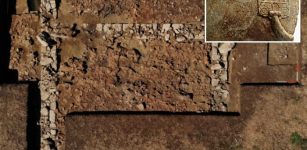 Archaic Temple (Part Of God Poseidon’s Sanctuary) At The Kleidi-Samikon Site In Greece – Unearthed
Archaeology | Jan 12, 2023
Archaic Temple (Part Of God Poseidon’s Sanctuary) At The Kleidi-Samikon Site In Greece – Unearthed
Archaeology | Jan 12, 2023 -
 Neanderthals May Have Been Carnivores – New Study
Archaeology | Oct 17, 2022
Neanderthals May Have Been Carnivores – New Study
Archaeology | Oct 17, 2022 -
 Rio Tinto Bosses Quit Over Destruction Of One Of The Earliest Aboriginal Sites
News | Sep 12, 2020
Rio Tinto Bosses Quit Over Destruction Of One Of The Earliest Aboriginal Sites
News | Sep 12, 2020 -
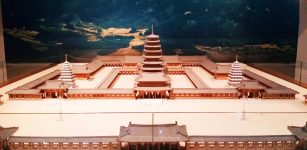 Mireuksa Pagoda: Largest And One Of The Oldest Of Korean Pagodas
Archaeology | Jan 1, 2016
Mireuksa Pagoda: Largest And One Of The Oldest Of Korean Pagodas
Archaeology | Jan 1, 2016 -
 On This Day In History: Famous British Archaeologist And Egyptologist Sir Flinders Petrie Born – On June 3, 1853
News | Jun 3, 2016
On This Day In History: Famous British Archaeologist And Egyptologist Sir Flinders Petrie Born – On June 3, 1853
News | Jun 3, 2016 -
 On This Day In History: National Hero Paul Revere Warns Of The British Coming – On Apr 18, 1775
News | Apr 18, 2016
On This Day In History: National Hero Paul Revere Warns Of The British Coming – On Apr 18, 1775
News | Apr 18, 2016 -
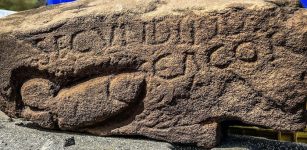 Ancient Graffiti Unearthed At Roman Vindolanda Reveals What One Roman Thought Of Another
Archaeology | May 27, 2022
Ancient Graffiti Unearthed At Roman Vindolanda Reveals What One Roman Thought Of Another
Archaeology | May 27, 2022 -
 Story Behind The Two Keys On Vatican’s Flag
Ancient History Facts | Feb 28, 2018
Story Behind The Two Keys On Vatican’s Flag
Ancient History Facts | Feb 28, 2018 -
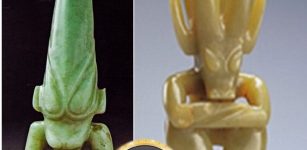 Ancient Hongshan Culture: Creators Of A Pyramid And Remarkable Artifacts That Are Still Shrouded In Mystery
Ancient Mysteries | Jun 20, 2015
Ancient Hongshan Culture: Creators Of A Pyramid And Remarkable Artifacts That Are Still Shrouded In Mystery
Ancient Mysteries | Jun 20, 2015



